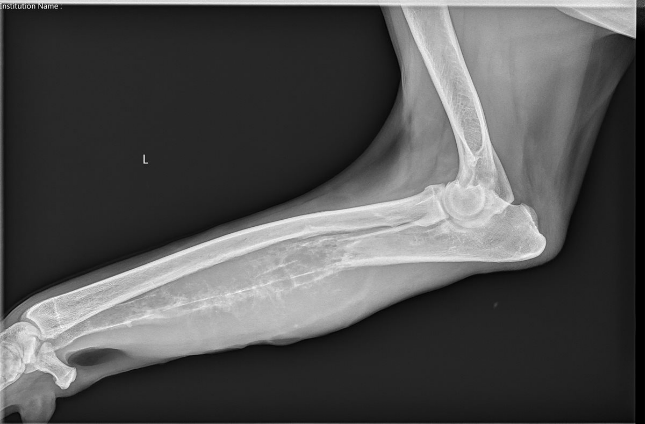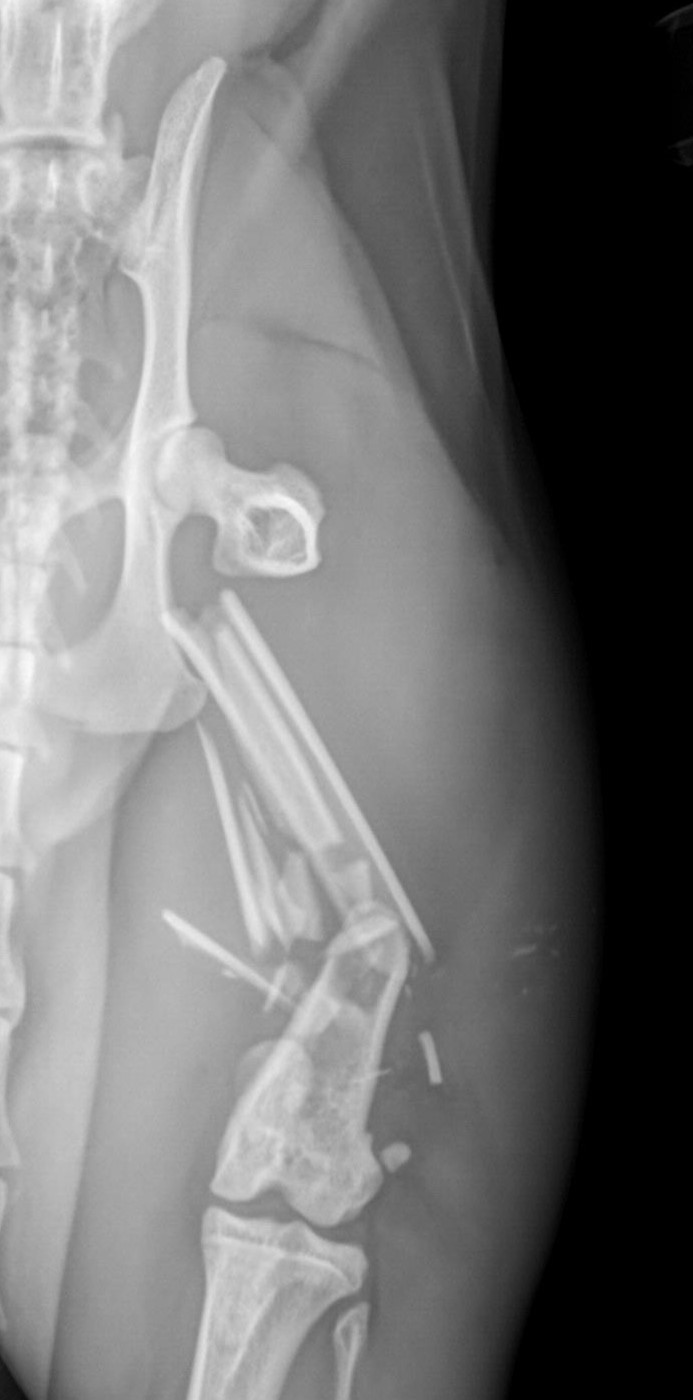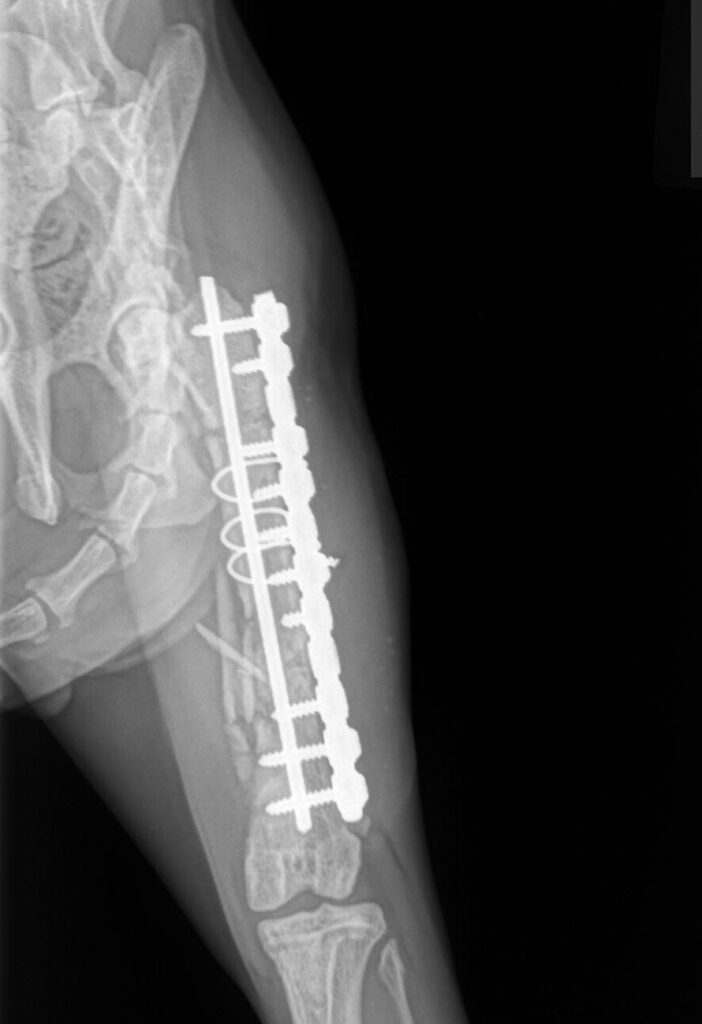
“I recommend amputating your pet’s leg.”
No pet owner ever wants to hear these terrible words.
Sadly, it’s a common situation family vets and surgeons are in.
At HRVSS, we perform a significant number of leg amputations – front or back – in cats and dogs.
And almost every time, it’s an uncomfortable conversation.
The most common reasons to amputate are cancer and severe trauma.
The good news is that, no matter how drastic the surgery is, patients typically do well after losing a leg.
As I always explain to my clients, many times, the patient is already walking on 3 legs, usually because of pain, before surgery.
So it seems logical that the pet will continue to walk on 3 legs after surgery.
The only difference is that the pain will be gone and the dead weight will not be in the way.
Still, it’s a hard pill to swallow…
I suspect there are some psychological reasons that make pet owners think of themselves, trying to function with only one arm or hopping on one leg.
And that’s the beauty of pets: they don’t need to drive, type or flip channels.
All they care about is being happy and pain-free.
Cancer patients
The most common reason we have to sacrifice a dog’s leg is because of bone cancer.
And the most common type of bone cancer is called osteosarcoma.
There are other types of cancers that would lead us to remove a pet’s leg.
It doesn’t even have to be cancer. If a mass has grown so much that it can’t be removed, or the skin cannot be closed, it may be a reason to consider amputation.
Below is an X-ray of Chant’s forearm, a 5-year-old Great Dane. The smaller bone, the ulna, has been eaten away by bone cancer (osteosarcoma).

Trauma patients
Occasionally, a pet’s leg is so severely traumatized, that there is no reasonable way to reconstruct it.
My own cat, Caramel, who I rescued after amputating her leg, had been attacked by a dog. She had 17 fractures in a front leg. Virtually every bone was broken. The only reasonable option was amputation.
I often mention her story to cat owners when we discuss amputation. And I explain that she could climb anywhere, balance herself in crazy situations, and run like the wind, all on 3 legs.
And then sometimes, reconstructing a crazy fracture is possible.
I will always remember Didder, a 2 year old kitty, who had around 15 fractures in the thigh bone (femur). Instead of choosing the easy solution – amputation – I thought that we had a good chance at a successful outcome.
His amazing owner, instead of choosing the easy and cheaper route, also made the tougher decision and opted to put the bone back together.
This is a view from the front of the thigh bone before surgery:

His femur was repaired with a metal plate, 10 screws, 3 wires, 1 pin and a bone graft.
This is a view from the front of the thigh bone after surgery.

Two years after surgery, Didder’s owner wrote: “You’d never know anything happened to Didder – which is greater than any outcome we could have imagined the sad night we found him so horribly broken! (…) Our family is grateful that you were able to successfully rebuild our baby boy.”
Typical outcome after amputation:
. Most pets do very well after amputation.
. Most pets get up and walk on 3 legs shortly after surgery.
. Most of my clients are surprised at how well their pets do after amputation.
. I don’t ever remember a pet owner regretting their decision to amputate their pet’s leg.
. Even in the case of aggressive cancer, and even when the pet’s survival is not as long as we hoped, I’ve never had a client express regrets about their decision.
. My most surprising patient, Gator, was able to swim in the pool with 3 legs (and a life jacket).
. More recently, a client sent a picture of Dixon, a 12 year old, 11 lb Terrier, doing agility with his sister. She also shared the following video of Dixon running:
www.youtube.com/shorts/PUVi8z8I4MQ
As long as the client and the surgeon are on the same page, and we make decisions as the pet’s best advocates, we typically get good results, regardless of the amount of time left.
As I always say, I would rather have 3, 6 or 12 months of quality life, than 3 years of misery.
I will let the owner of Dixon, a bone cancer survivor, conclude this blog post:
“Before the surgery, we were worried about him just making it through the surgery OK. And we were worried about whether it would improve his quality of life for long enough to make it worth the pain of the surgery and post-op recovery.
Now, we are beyond pleased with our decision. He has adjusted so well, and he has had 6 pain-free months of happiness so far!”
If you would like to learn how we can help your pet with safe surgery and anesthesia, please contact us through www.HRVSS.com
Never miss a blog by subscribing here: www.HRVSS.com/blog
Phil Zeltzman, DVM, DACVS, CVJ, Fear Free Certified

